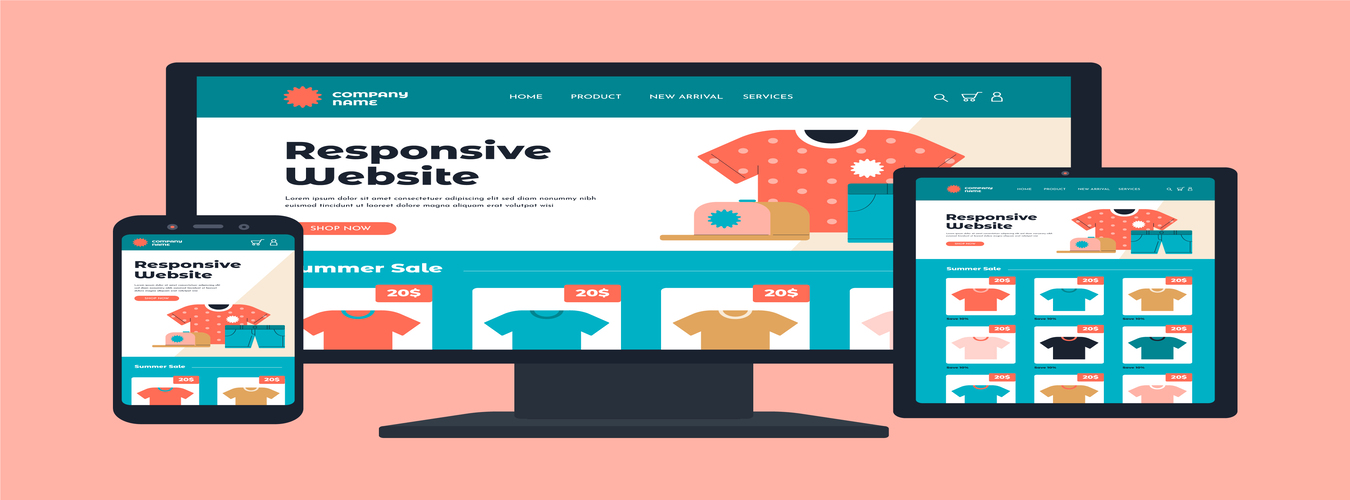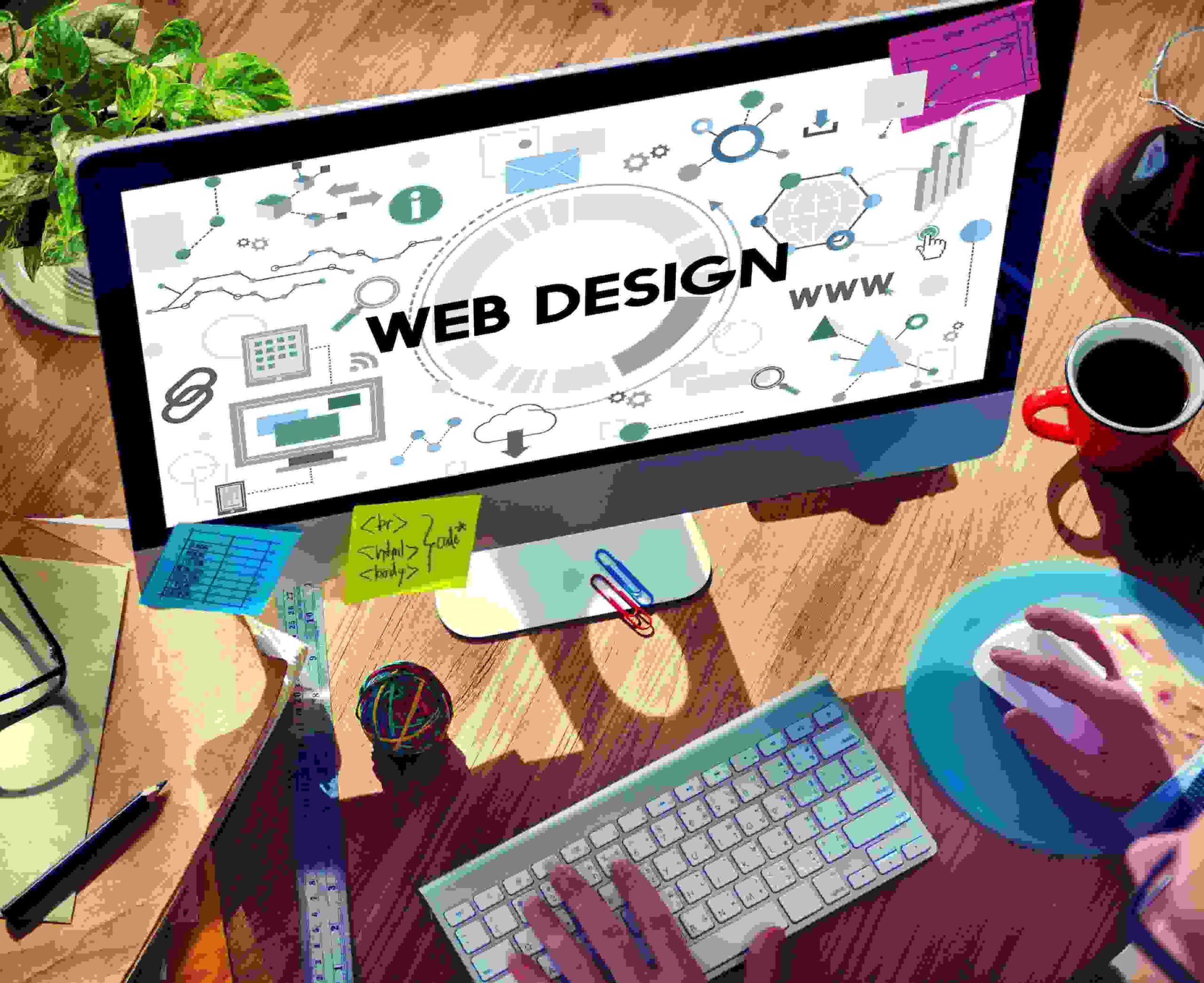E-commerce Website Design Trends for 2024
As e-commerce continues to dominate the digital landscape, website design plays a critical role in converting visitors to customers. From user-centric design and innovative visual experiences to advanced AI integrations, here are the top e-commerce website design trends expected to make waves in 2024.
1. Minimalist and Clean Aesthetics
The minimalist design trend continues to be a favorite in 2024, especially in e-commerce, where simplicity can enhance navigation and reduce cognitive load. Clean aesthetics help users focus on products without distractions, allowing them to locate the items they’re interested in quickly. This style often emphasizes ample white space, fewer colors, and bold, simple typography. E-commerce platforms that rely on a minimalist design see better user engagement as it improves readability and decreases bounce rates.
2. Personalized Experiences with AI and Machine Learning
Artificial Intelligence (AI) and machine learning are revolutionizing personalization in e-commerce. In 2024, AI-based tools are helping websites offer a tailored experience, from recommending products based on past searches to curating entire homepages based on user behavior. Machine learning algorithms analyze user data to predict preferences, allowing businesses to offer targeted deals, upsells, and personalized landing pages. This approach helps create a more relevant shopping experience, increasing customer satisfaction and boosting conversion rates.
3. Immersive 3D Visuals and Animations
With advancements in graphics and faster load times, 3D elements and animations are now more feasible for e-commerce sites. Brands are using 3D visuals to showcase products in a way that mimics an in-store experience. For example, users can view products from multiple angles or even interact with 3D models, especially in furniture and apparel. Moving animations, like “micro-interactions” that activate when users hover over or click on a product, add an element of surprise and can be particularly effective in creating a memorable browsing experience.
4. Mobile-First and Responsive Design
A mobile-first design is no longer optional but a necessity. With the majority of online shopping happening on mobile devices, e-commerce sites that prioritize mobile responsiveness can provide a seamless experience across all devices. In 2024, responsive design includes touch-friendly interfaces, larger buttons, and mobile-friendly navigation menus that make shopping on smartphones and tablets enjoyable and efficient. Embracing this design ensures that users have a smooth experience, whether they’re shopping on a desktop, tablet, or smartphone.
5. Dark Mode for Better UX and Energy Efficiency
Dark mode design has gained popularity due to its aesthetic appeal and energy-saving benefits on OLED screens. Dark backgrounds create a sense of elegance and make product images stand out, especially for brands in the luxury or tech sectors. In 2024, many e-commerce websites offer a toggle option for users to switch between light and dark modes, catering to user preferences. Beyond aesthetics, dark mode reduces eye strain, which can lead to longer browsing sessions.
6. Augmented Reality (AR) Integration
Augmented Reality (AR) technology enables users to visualize products in their real-world environments. In industries like fashion, home decor, and beauty, AR allows users to “try before they buy.” This feature, which has become more accessible and popular on mobile platforms, can significantly reduce product returns and increase buyer confidence. For instance, furniture retailers allow customers to place virtual items in their homes using AR, while beauty brands let users test out makeup shades on their faces via smartphone cameras.
7. Voice-Activated Search and Navigation
Voice search technology, fueled by smart assistants like Alexa and Siri, is transforming how people interact with e-commerce websites. As voice search usage grows, e-commerce sites are integrating voice-activated search functionality to improve accessibility and speed up the shopping process. This is especially useful for users on mobile devices who prefer a hands-free browsing experience. Optimizing websites for voice search also involves using natural language processing (NLP) to match conversational queries with relevant products, making the search experience more intuitive.
8. Enhanced Product Videos and Live Streaming
Video content has proven to increase engagement and conversions, and in 2024, e-commerce websites are leveraging video in even more innovative ways. Product videos offer a dynamic and comprehensive view of items, helping customers better understand what they’re purchasing. Some brands are also using live streaming to showcase products in real-time, offering interactive demonstrations and Q&A sessions to provide in-depth product information. Live streaming allows shoppers to interact directly with sellers, adding a personal touch to online shopping and building trust in the brand.
9. Sustainability-Centric Design
Today’s consumers are increasingly conscious of the environmental impact of their purchases, prompting e-commerce brands to emphasize sustainable practices. Websites now feature eco-friendly elements such as green indicators for sustainable products, transparency about materials, and energy-efficient practices in operations. In 2024, brands are also prioritizing energy-efficient website designs, like minimal loading times and optimized coding, which reduce the overall carbon footprint of online shopping.
10. Gamification for Increased Engagement
Gamification introduces fun elements to the shopping experience by incorporating rewards, challenges, or interactive content. E-commerce brands are creating “spin-the-wheel” offers, points-based reward systems, and other engaging features that encourage repeat visits. When users are rewarded for specific actions, like sharing products on social media or making a purchase, it not only drives engagement but also enhances brand loyalty.
11. One-Page Checkout for Fast Conversions
To reduce cart abandonment rates, e-commerce sites in 2024 are focusing on streamlining the checkout process. One-page checkouts reduce the friction associated with multiple steps and improve the user experience by consolidating all essential information on a single page. Simplified checkouts increase the likelihood of conversion by allowing users to quickly complete their purchases, especially on mobile devices where multi-step checkouts can be cumbersome.
12. Artificial Intelligence (AI) for Customer Support
Customer service is crucial for e-commerce success, and AI-powered chatbots are enhancing support by offering instant responses to frequently asked questions, handling order tracking, and assisting with simple troubleshooting. AI-driven customer support can also personalize interactions, learning from user data to offer tailored assistance. For e-commerce businesses, this translates to reduced support costs and improved customer satisfaction.
13. Social Commerce Integration
Social media platforms like Instagram, Facebook, and Pinterest have become powerful e-commerce tools, allowing users to shop directly through their social feeds. E-commerce websites are taking advantage of social commerce by incorporating “Shop Now” or “Buy” buttons and integrating shoppable content directly on their platforms. This trend enables brands to leverage the power of social proof and influencer marketing while providing customers with a seamless way to browse and purchase products from their social media accounts.
Conclusion
The e-commerce design landscape in 2024 reflects a blend of functionality, personalization, and cutting-edge technology. From mobile-first and dark mode interfaces to interactive features like AR and voice search, these trends are focused on making online shopping as intuitive and engaging as possible. By staying on top of these trends, brands can create a seamless user experience that encourages purchases and builds brand loyalty. At Moz Web Media LLC, we specialize in integrating these advanced design features to create engaging, customer-focused e-commerce sites. Let’s help you bring your vision to life with a website that’s not only visually stunning but also optimized for conversions and user satisfaction.




